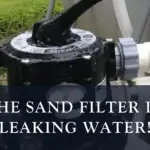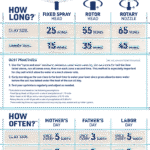Imagine this: you’ve just stocked your fridge with groceries, eager to whip up a delicious meal, but you notice your refrigerator isn’t cooling. Yet, the freezer is working perfectly fine.
Frustrating, isn’t it? You’re not alone. Many face this puzzling issue, and it can be a real headache. But don’t worry, you’re about to uncover why this happens and how you can fix it. In this post, we’ll dive into the common causes of a refrigerator not cooling while the freezer is operating normally.
You’ll learn simple steps to diagnose the problem and solutions to get your fridge back in action. Whether you’re dealing with faulty parts or just need a quick tweak, understanding what’s happening can save you time and money. Keep reading to discover how you can ensure your refrigerator and freezer work together seamlessly. Your peace of mind—and chilled drinks—are just a few scrolls away!

Credit: www.commercialfridgerepairs.com.au
Common Causes
Refrigerators are essential for keeping food fresh and safe. Sometimes, the fridge section stops cooling while the freezer works fine. This can confuse and worry many homeowners. Understanding the reasons behind this problem helps in fixing it. Let’s explore some common causes.
Thermostat Issues
The thermostat controls the fridge’s temperature. A malfunctioning thermostat may not signal the compressor to cool. This leads to a warm fridge while the freezer remains cold. Check if the thermostat is set correctly. It might need adjustment or replacement.
Blocked Vents
Vents allow cold air to circulate between the freezer and fridge. Blocked vents can restrict airflow, affecting cooling efficiency. Make sure nothing blocks the vents. This includes food items, ice buildup, or debris. Clearing vents can often restore cooling.
Damaged Door Seals
Door seals keep cold air inside the fridge. Damaged or worn seals let warm air in. This results in a warmer fridge section. Inspect the seals for cracks or damage. Replacing faulty seals can improve cooling performance.
Diagnostic Steps
A refrigerator not cooling while the freezer works may be due to blocked vents or a faulty thermostat. Cleaning the vents and checking the settings can help. Ensuring proper airflow and inspecting the evaporator fan also aids in diagnosing the issue effectively.
When your refrigerator isn’t cooling but the freezer works, frustration mounts. Diagnosing the issue may seem daunting. Yet, with a few steps, you can pinpoint the problem. This guide simplifies the diagnostic process. You’ll understand the basic checks needed. Ready to get started? Let’s dive in.Checking Temperature Settings
Begin with the temperature settings. Incorrect settings might cause cooling issues. Check the temperature dial. Is it set too high? Adjust the dial to a lower setting. Wait a few hours. See if the refrigerator cools properly. If not, move to the next step.Inspecting Airflow
Airflow is crucial for cooling efficiency. Blocked vents can disrupt this flow. Check for obstructions in the fridge. Ensure items aren’t blocking vents. Clear space around vents. This allows air to circulate freely. If airflow is still restricted, investigate further.Testing Seals
Door seals maintain the refrigerator’s internal climate. Worn or damaged seals let cold air escape. Inspect the seals around the door. Look for cracks or gaps. Use a piece of paper to test the seal. Close the door on the paper. Try pulling the paper out. If it slides out easily, the seal may need replacing. Proper sealing ensures optimal cooling.Solutions And Repairs
Experiencing issues with a refrigerator not cooling while the freezer works can be frustrating. This common problem often arises from blocked air vents or faulty door seals. Addressing these issues promptly ensures food stays fresh and prevents spoilage. Simple fixes often restore your fridge’s performance efficiently.
When your refrigerator stops cooling but the freezer remains functional, it can be frustrating and puzzling. You’re probably wondering why this is happening and, more importantly, how to fix it. Fortunately, there are practical solutions and repairs you can attempt at home before calling a professional. With a little patience and a few tools, you can potentially solve the issue yourself.Adjusting Thermostat
The thermostat setting is one of the simplest things to check. Often, a slight bump or accidental adjustment can set the temperature too high for the refrigerator compartment. Take a look inside your fridge and locate the thermostat dial. It’s usually somewhere along the side or at the back. Adjust the dial to a colder setting and wait a few hours to see if cooling improves. Sometimes, the thermostat might be faulty, causing incorrect readings. If adjusting doesn’t work, consider replacing it with a new one.Clearing Obstructions
A blocked vent between the freezer and refrigerator compartments can prevent cold air from circulating properly. You might have unknowingly placed a large item in front of it. Check for any obstructions blocking the vent. Remove oversized containers or rearrange food items to allow better airflow. If the vent itself is clogged with ice or debris, gently clean it out. A small brush or even a vacuum can help with this task.Replacing Seals
Worn or damaged door seals can let warm air into the refrigerator, impeding its ability to cool. Do you notice any gaps or feel air escaping when the door is closed? Examine the seals closely for any tears or cracks. Replacing them is often straightforward and inexpensive. New seals can be purchased at most appliance stores. Simply remove the old one and snap the new seal into place, ensuring a tight fit. By taking these steps, you can often resolve the cooling problem yourself. Have you ever tried fixing your refrigerator before? Share your experiences or any additional tips in the comments below!Preventive Measures
Check refrigerator vents for blockages to ensure proper airflow. Clean condenser coils regularly to maintain cooling efficiency. Adjust thermostat settings to the recommended temperature for optimal performance.
When your refrigerator isn’t cooling but the freezer works, it’s frustrating. You can prevent this common issue with simple steps. By taking these preventive measures, you can keep your fridge in optimal condition and avoid inconvenient breakdowns.Regular Maintenance
Think of your refrigerator as a car. It needs regular check-ups to run smoothly. Cleaning the coils at the back or underneath helps it breathe easier. Dust and pet hair can clog them, making your fridge work harder. I once ignored this, and my energy bill soared! Ever checked the door seals? They should be tight. A simple test with a dollar bill can show if air is escaping. If the bill slips out easily, it’s time to replace those seals.Proper Loading Techniques
Are you overstuffing your fridge? It’s tempting, especially after a big grocery trip. But overcrowding blocks air vents. This prevents cool air from circulating. Place items with space around them for optimal airflow. I found this out the hard way when my lettuce wilted in a crammed fridge. Do you have warm leftovers? Let them cool before storing to maintain the internal temperature.Monitoring Temperature
Do you regularly check your fridge’s temperature settings? Many forget that a slight turn of the dial can save food and energy. Aim for about 37-40°F for the refrigerator and 0°F for the freezer. A digital thermometer can help you keep track. I once discovered my fridge was set too high, causing food spoilage. Adjusting it made a world of difference. Are you ignoring potential warning signs? Listen for strange noises or notice any unusual smells. Early detection can prevent bigger problems. Would you rather deal with a minor tweak now or a costly repair later? Regular attention to these details can keep your fridge and freezer working in harmony.When To Call A Professional
When your refrigerator stops cooling but the freezer works, it’s frustrating. You might wonder whether to fix it yourself or call a professional. Knowing when to call a technician saves time and money.
Signs Of Major Issues
Look for unusual noises from the refrigerator. Clanking or buzzing sounds indicate serious problems. Warm food inside the fridge is another warning sign. It shows the cooling system isn’t working.
Notice any frost build-up in the freezer? This can mean the defrost system is faulty. Water puddles around the fridge also suggest a malfunction. These issues often need professional help.
Choosing A Reliable Technician
Finding the right technician is important. Start by asking friends for recommendations. They might know a skilled repair person.
Check online reviews of local technicians. Look for those with good ratings. Make sure the technician has experience with your fridge brand. This ensures they know how to fix it.
Request a written estimate before they start the work. This helps avoid unexpected charges. A trustworthy technician explains the problem clearly. They should also provide solutions in simple terms. This makes you feel confident in their service.

Credit: www.maughansterappliancerepair.com

Credit: www.youtube.com
Frequently Asked Questions
Why Is My Fridge Not Cooling But Freezer Works?
This issue may be due to a blocked air vent. Check for obstructions.
How Do I Fix A Fridge Not Cooling?
Clean the condenser coils. Ensure the fan is running properly.
Can A Faulty Thermostat Affect Fridge Cooling?
Yes, it can. Replace the thermostat if it’s not functioning.
Is It Normal For The Fridge To Stop Cooling Suddenly?
No, it’s not. Inspect for mechanical or electrical issues.
What Should I Do If The Fridge Is Warm?
Ensure proper airflow. Rearrange items blocking air vents.
Conclusion
Troubleshooting a refrigerator can be simple with the right steps. Check the vents. Make sure they’re not blocked. Clean the coils to improve efficiency. Inspect the thermostat settings. Ensure they are set correctly. Consider a professional if problems persist. Regular maintenance prevents most issues.
Keep your fridge clean and organized. This helps airflow and cooling. A well-functioning refrigerator keeps food fresh. Save energy. Save money. Stay informed about common issues. Take action early to avoid bigger problems. Your kitchen runs smoothly with a reliable fridge.
Enjoy the peace of mind it brings.




